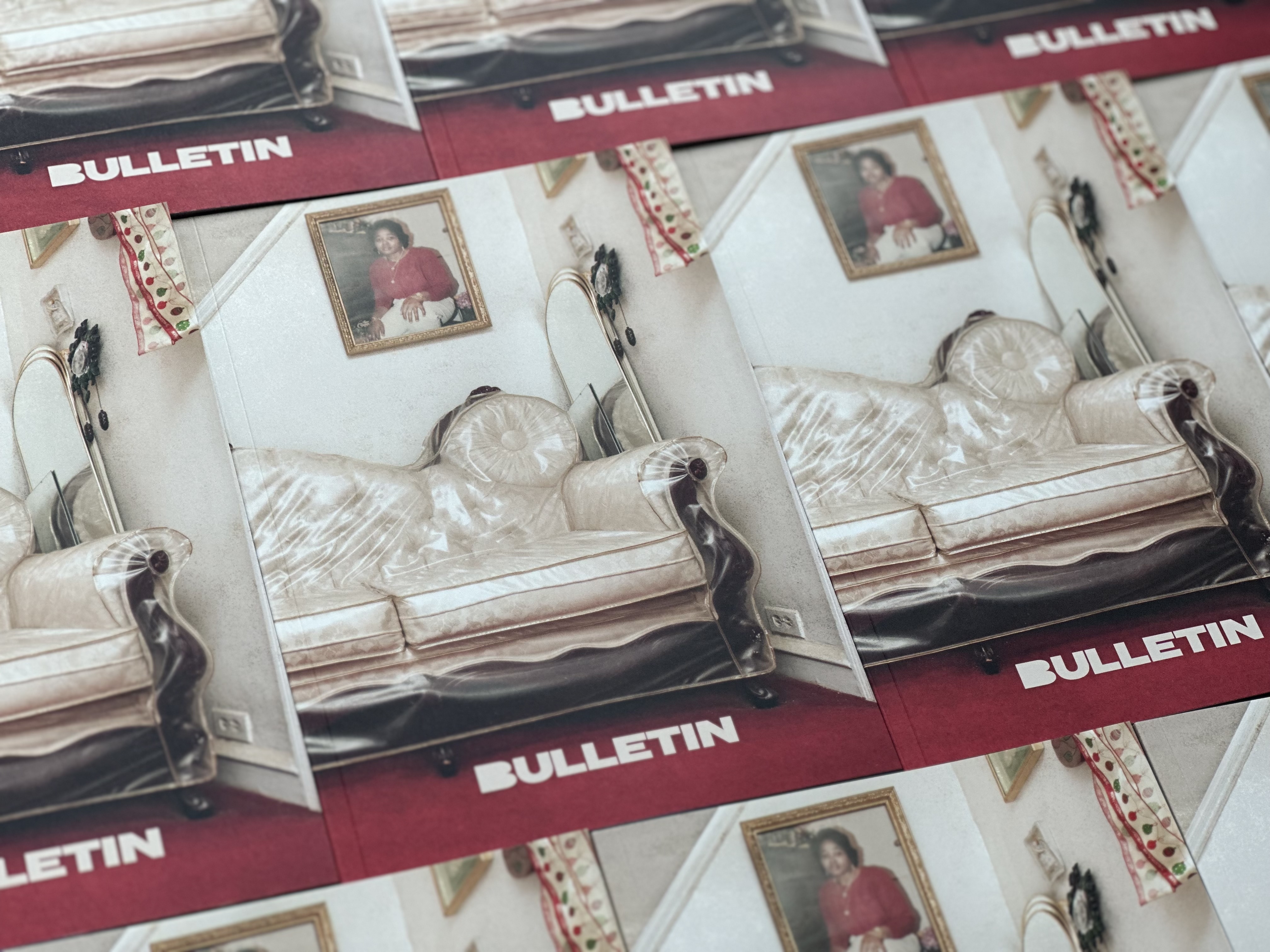Monument Lab is excited to launch Bulletin, a public art and history print journal that offers perspectives on critically reading and reimagining monuments. Through this platform, we collaborate with artists, scholars, curators, activists, and writers to question the symbols and systems that we have inherited — and to envision new directions and pathways for public memory. In our inaugural issue edited by Patricia Eunji Kim, we explore the theme of “Ghosts.” Contributors Charles Athanasopoulos, Jeanne Dreskin, Paul Farber, Frances Ellen Watkins Harper, Naomieh Jovin, Cannupa Hanska Luger, Shannon Mattern, Nicholas Mirzoeff, TK Smith, and Marisa Williamson consider the specters, haunting sensations, and eerie remnants of the past as they relate public art, space, and memory. Order your copy of Bulletin today:

“Letter from the Editor” by Patricia Eunji Kim:
Welcome to Monument Lab's Bulletin, a collaborative platform for critically reading and reimagining monuments. In this inaugural print issue, we turn our attention to the subject of ghosts, pondering the effects of specters, haunting sensations, and eerie remnants of the past. In many cultures, ghosts are considered apparitions or spirits of the dead that make themselves known to the living through senses,signs, and traces; such moments of revelation may be frightening and disorienting, or in some cases, wholly transformative. Thus, the unique (even strange) temporalities and materialities of ghosts make them a useful motif for conceptualizing the political and social stakes of memory work. Indeed, ghosts are a bit like memories. Though they recall the past, memories are often distinct from the realm of history. Walter Benjamin posits that history concerns itself with singular, dominant narratives of progress through time. Others cast memory as belonging to the domain of fantasy; as Paul Ricoeur points out, memory has been understood to “operate in the wake of the imagination. Imagination, considered in itself, is located at the lowest rung of the ladder of modes of knowledge.”1 However, memory is not fantastical, and instead “constitut[es] the temporal mark par excellence of the ‘thing remembered,’ of the ‘remembered’ as such.” For one, this suggests that history and memory desperately need each other in processes of knowledge-making that are concerned with the truth of the past. Moreover, such conceptualizations of memory as “the thing remembered” imply that memory-making is a recursive practice that takes place in the present and in the future. Far from invisible or immaterial, ghosts give shape to “the remembered,” whether in the form of images, sensations, or feelings. In Ghostly Matters, Avery Gordon argues that the ghost “is not the invisible or some ineffable excess . . . it has a real presence and demands its due, your attention.”2
Gordon uses the language of haunting to describe the breathtaking scale of violence that reverberates across time and space precisely because of the denial or repression of that violence in (re)tellings about the past in the first place. “Haunting raises specters,” Gordon writes, “and it alters the experience of being in time, the way we separate the past, the present, and the future.” These ghosts, in other words, poke at us while making their marks on entire geographic spaces and cultural landscapes. Ghosts blur the very temporal boundaries that claim to organize human history so that we’re able to acknowledge, and grapple with, the very real, material, and somatic toll of harm.
The artists, writers, poets, and performers featured in this issue offer a range of perspectives on thinking spectrally about monuments. In this issue, you’ll find collaborative conjurings as well as poetic ruminations on forgetting and mourning (and more). Some contributors deal with the spirits that refuse to lay themselves to rest, while others offer new ideas for monuments that honor these specters by rendering them legible across various modalities. What results is a collection of visionary, nuanced, and exploratory discussions about the reparative possibilities of public art, public history, and public conversations about the ghosts that haunt us.
1) Paul Ricoeur, Memory, History, Forgetting (Chicago: University of Chicago Press, 2004), 5.
2) Avery Gordon, Ghostly Matters, 2nd ed. (Minneapolis: University of Minnesota Press, 1997), xvi.
Credits:
Editor: Patricia Eunji Kim
Publisher: Yolanda Wisher
Editorial Advisor: Paul Farber
Designer: Jonai Gibson Selix
Copy Editor: Gretchen Dykstra
Project Manager: Elliot Waters-Fleming
Monument Lab Team: Kristen Giannantonio, Florie Hutchinson, Jenn McTague, Aubree Penney, Stephani Pescitelli, Julie Rhoad, Bella Rodriguez, Dina Paola Rodriguez, Nico Rodriguez, Cleary Rubinos, Kate Sullivan
Monument Lab Board of Directors: Lola Bakare (Secretary), Ellery Roberts Biddle, Amari Johnson, Monica O. Montgomery (Vice Chair), Stephan Nicoleau (Treasurer), Michelle Angela Ortiz, Samala, Kirk Savage, and Tiffany Tavarez (Chair)
Support for Monument Lab is provided by the Mellon Foundation, Forman Arts Initiative, The Hearthland Foundation, Open Society Foundations, the Philadelphia Foundation, and Wagner Foundation.
